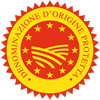Description
The Livarot PDO is a soft-paste cheese, elaborated starting from skimmed milk of cows of Norman breed (100% in 2017) raised in the Pays d'Auge where they crop six months a year at least.
Production Area
The production area of Livarot PDO goes from the coast to the southern side of the natural region of Pays d'Auge, in 291 municipal areas between the departments of Calvados, Eure and Orne, in the regions of Upper and Lower Normandy.
Production Method
The milk used for the production is inseminated with lactic culture and curdled the day after milking at about 35°C. The curd obtained is cut and the whey is partially eliminated, then it is put into moulds and undergoes a dripping process. The cheeses, after having been removed from moulds, are salted and put into cellars at a temperature between 10°C and 14°C where they remain for more weeks. During this period, the cheeses are washed three times at least with salted water possibly additionned with a natural red colouring and micro-organisms culture. Finally, tying up is made by means of paper strips or bands obtained from the Massette, a marshy tree. After this operation, ripening continues and generally lasts six weeks. In any case, it must last at least 21 days for the two small sizes and 35 days for the two bigger ones.
Appearance and Flavour
Livarot PDO has a flattened cylindrical shape, hooped with sedges or paper strips. The weight spans from 450 gr to 500 gr. The rind has a washed, straw-yellow colour and slightly sticky and corrugated. The paste is soft and has dark yellow colour with some small holes. It is slightly salted and fondant, with a strong and persistent aroma, characterised by a tasteful animal flavour with a slight smoked aftertaste.
History
The origins of Livarot PDO go back to the end of the Middle Ages in the heart of Normandy. It was a country cheese, slightly different from Camembert and Pont-l'Evêque. At that time, the cheeses produced in the area of Pays d'Auge were called Angelots, which later became Augelot. Later, this cheese took the name of the small town of Livarot which hosted one of the most important markets in the region where it was sold.
Gastronomy
Livarot PDO can be conserved in the least cold compartment of the refrigerator, wrapped into a foil. Before eating it, it is suggested to leave it rest at room temperature for about one hour. Traditionally, it is tasted at the end of a meal, but it can be also used as a snack or alone with a slice of baguette. It is ideal with the cider of Pays d'Auge PDO or even Calvados PDO but also with white wines (Bourgogne aligoté, Sauternes) or bodied red wines (Chinon, Côtes du Rhône)
Marketing
The product is sold as Livarot PDO. It is marketed in four different formats: Grand Livarot (19-21 cm diameter, 1.2-1.5 kg); Livarot (12-12.8 cm diameter, 450-500 gr), three-fourth Livarot (10.7-11.5 cm diameter, 330-350 gr); Small Livarot (8-9.4 cm diameter, 200-270 gr)
Distinctive Features
Livarot PDO is a cheese characterised from a strong odour and is easy to recognise due to its characteristic band in natural raffia, from which comes the local use to call it Colonel, due to the five bands of green raffia which wrap the cheese and recall the bands on the military uniforms. The characteristics of this cheese are also closely linked to the type of milk used to produce it, as the Norman breed cows produce a milk rich of fats, ideal to be transformed into butter and cheese.





